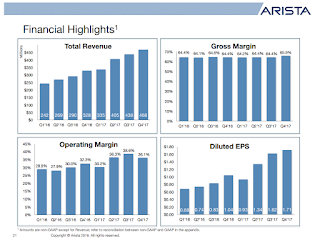Juniper Networks introduced a new line of Ethernet switches designed for the new era of multicloud networking, where the assumption that distributed enterprises will access resources from multiple data centers is a reality.
The rollout includes new switches for the enterprise data center, campus, and branch, as well as a new cloud-based management platform called Sky Enterprise. Junos remains central to all of the new products and the rest of the existing switching portfolio.
“The promise of multicloud is to deliver an infrastructure that is secure, ubiquitous, reliable and fungible and where the migration of workloads will be a simple and intuitive process,” said Bikash Koley, chief technology officer at Juniper Networks. “For IT to be successful in becoming multicloud-ready, it is critical organizations consider not only the data center and public cloud, but also the on-ramps of their campus and branch networks. Otherwise, enterprises will face fractured security and operations as network boundaries prevent seamless, end-to-end visibility and control.”
Highlights of the announcement include:
The rollout includes new switches for the enterprise data center, campus, and branch, as well as a new cloud-based management platform called Sky Enterprise. Junos remains central to all of the new products and the rest of the existing switching portfolio.
“The promise of multicloud is to deliver an infrastructure that is secure, ubiquitous, reliable and fungible and where the migration of workloads will be a simple and intuitive process,” said Bikash Koley, chief technology officer at Juniper Networks. “For IT to be successful in becoming multicloud-ready, it is critical organizations consider not only the data center and public cloud, but also the on-ramps of their campus and branch networks. Otherwise, enterprises will face fractured security and operations as network boundaries prevent seamless, end-to-end visibility and control.”
Highlights of the announcement include:
- A new QFX10002-60C "universal" switch for data center spine, data center edge and data center interconnect (DCI). It features 60x100 Gigabit Ethernet (GbE) deep-buffer interfaces.
- A new QFX5210-64C 64x100GbE port spine switch
- A new QFX5200-48Y 48x25GbE top-of-rack switch
- A new QFX MACsec line card addition for the QFX10000 modular switches. This card provides 30-port 100GbE connectivity for encrypted traffic in and between data centers.
- Juniper Sky Enterprise - a cloud management service that enables operators to deploy, configure and manage switching and security devices, reducing change errors by up to 90 percent. Sky Enterprise also gives network operators visibility into wireless access points using Aerohive Hive Manager NG API integration.
- New EX2300 and EX4300 compact switches for campus networks. The EX4300 multigig switch supports POE++ for new applications and MACsec to enable a secure on-ramp to the cloud. The EX9250 switch is a compact campus core that gives enterprises multiple fabric options by supporting both Junos Fusion and EVPN-VXLAN.
- New NFX150 Network Services Platform for branch offices. This combines native branch security and hybrid WAN functionality with wireless 4G and LTE connectivity between branches. Built as an extensible platform, it can run third-party virtual network functions (VNFs).
- Contrail SD-WAN with new subscription-based pricing: Juniper’s Contrail SD-WAN solution bundles the SRX Series Services Gateway and the NFX Series with the platform and orchestration software required for multicloud-ready SD-WAN. New subscription pricing bundles provide several physical and virtual endpoint options with secure SD-WAN management.

























